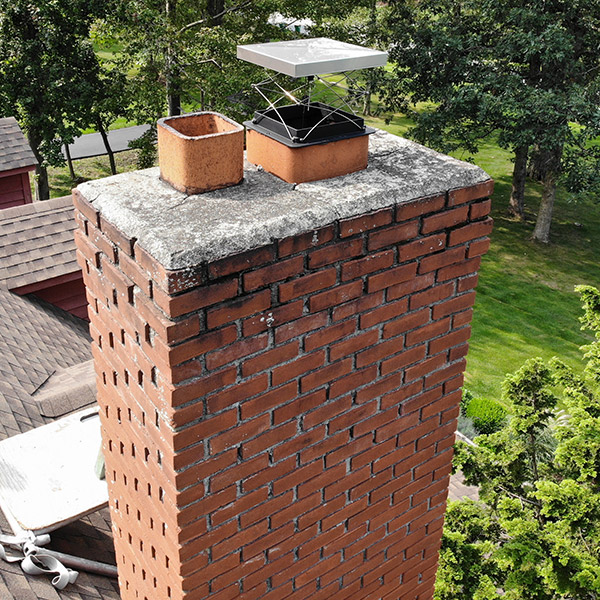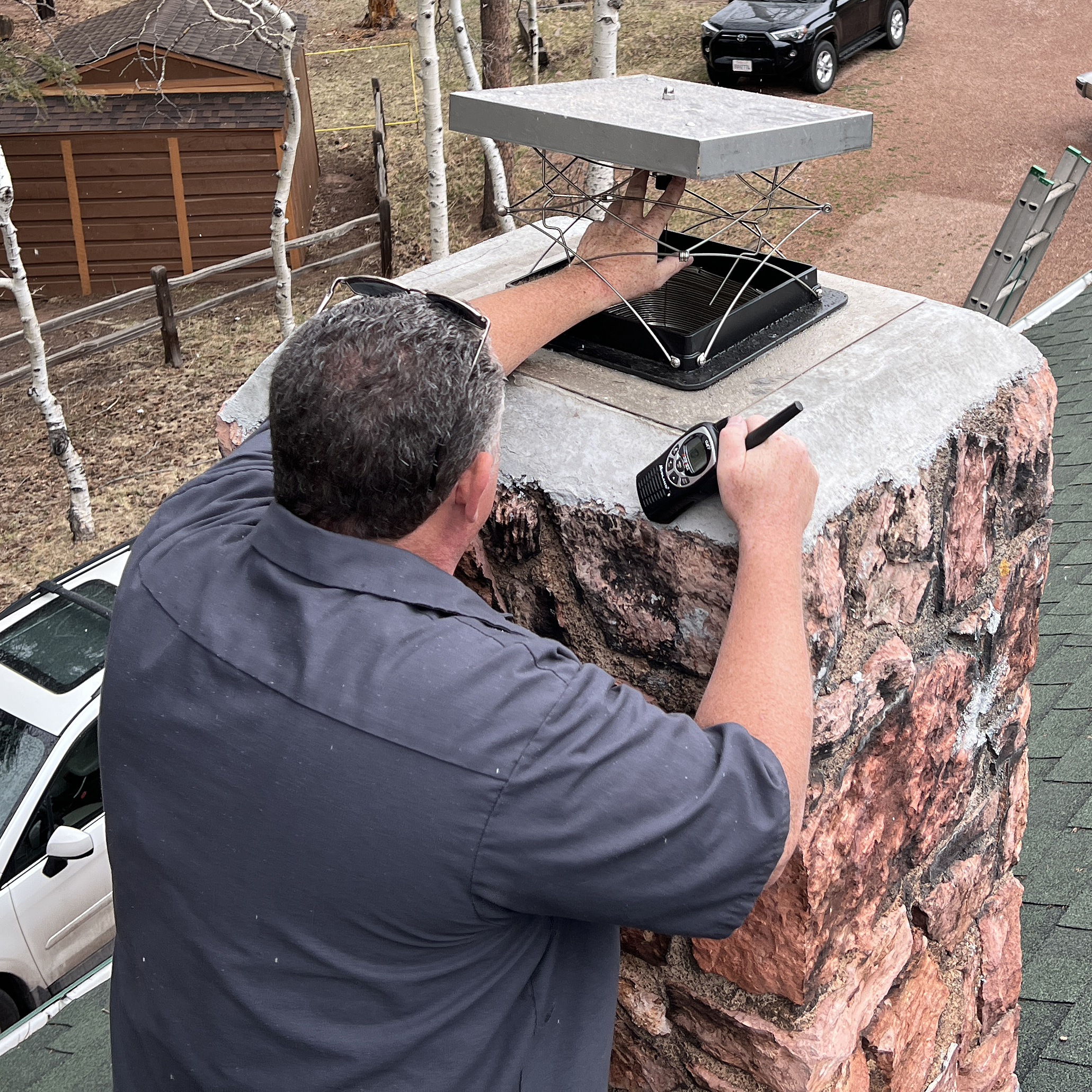The damper is an essential part of the chimney. A good, working damper is needed year-round. Anyone who operates your fireplace should know about the chimney damper to avoid danger and unnecessary expenses. A CSIA-certified chimney sweep will check the operation and closure of the damper assembly during chimney inspections, which should be scheduled annually. Find out the basics about chimney dampers….
 When to Open the Damper
When to Open the DamperThe chimney damper should be fully opened before lighting a fire. Otherwise, toxic combustion gases will go into the home. Carbon monoxide is among those fumes, and significant carbon monoxide exposure is life-threatening.
Opening the damper should allow the chimney draft to pull combustion gases up through the chimney flue and outside. However, a strong draft doesn’t just depend on an open damper.
There could be a column of cold air in the chimney that prevents fumes from entering the flue. Or the chimney flue could be obstructed by debris or an excessive buildup of creosote. Negative pressure in the home could also be disrupting the draft. If you can’t find a solution, a qualified chimney sweep can help.
After the fire has gone cold and combustion fumes have died out, close the damper. The damper should remain closed anytime the fireplace is not in use. It is important that the damper forms a seal to keep air from getting through. Dampers can warp, in which case a damper replacement is needed.
An open damper is like an open window in your home. The cost of heating and cooling your home may be much higher than necessary because of the open exchange of air coming through the chimney.
If you have questions about how to use your damper, you’re not alone. Flamemaster Chimney Sweep get urgent calls every year about smoke billowing into someone’s home, and the solution is to open the damper—but they may not know how to do that. Become familiar with the operation of your damper before starting a fire.
A throat damper and a top-sealing damper or chimney cap damper are the two basic types of dampers. The top-sealing damper is operated with a chain or cable inside the fireplace just above the firebox. Throat dampers are located above the firebox and are opened in a variety of ways.
Your throat damper may be a rotary damper, a poker damper, or a double pivot. These different names describe the mechanism used to open and close the damper.
Is there visible damage? Check the damper for signs of wear or damage, such as cracks, rust, warping, or missing parts. A damper that doesn’t seal correctly is useless, so check the seal for gaps or deterioration that could allow air to escape or moisture to get in. Are you getting pests in your chimney? It’s easy for pests and critters to access your home through the chimney. If you have a pest problem, check the damper to see if they’re getting in through it. Besides pests, if you notice water in your firebox, you have an increase in mold and mildew buildup, or your home smells musty, it could be that water is seeping through the damper because it’s not tightly sealed.

Finally, the damper should open and close effortlessly. When it becomes difficult to use, it usually means it needs repairs or replaced.
FlameMaster provides licensed chimney cleaning and inspection, as well as a full menu of chimney repairs and the replacement of parts. We’re the chimney experts you can count on for jobs done right every time.
We serve all of Crystola, CO, Woodland Park, CO, Colorado Springs, CO, Divide, CO, Manitou Springs, CO, Cripple Creek, CO, Victor, CO, and other nearby communities. You can get in touch with the team at FlameMaster Chimney Sweep LLC by giving us a call at (719)-661-3277 or simply by sending us a quick message via our online contact form.